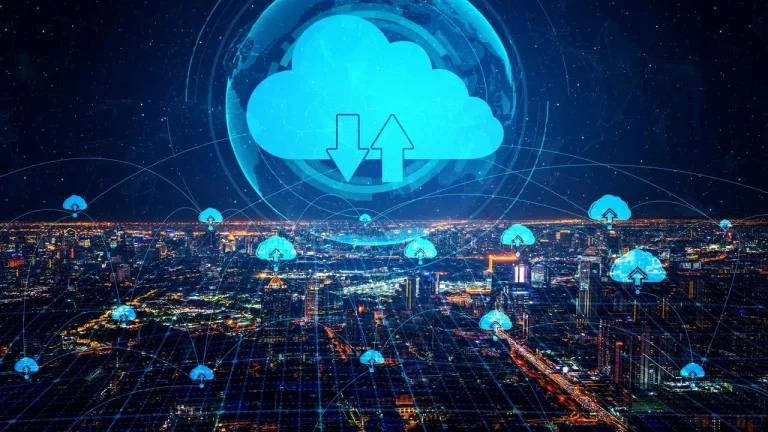The tech giant Microsoft, which has been actively competing in the global cloud computing and AI epidemic, is now slowing down several of its data center investments. This tremendously fast development was once the case across many locations; however, the pace has decreased and the company has been put to a series of economic, political, and logistic challenges.
Microsoft is reviewing its long-term infrastructure strategy is important for Azure and a range of new and upgraded AI services, due to concerns over-supply, energy constraints and tensions in various parts of the world. From halted construction in the Midwest to cost-prohibitive tariffs and shifting international priorities, Microsoft’s ambitious growth is suddenly mired in delays and uncertainty.
Cancellation of Key Data Center Leases
In February 2025, industry insiders confirmed that Microsoft canceled multiple data center leases across the U.S., representing hundreds of megawatts of capacity. These facilities were part of a larger effort to ramp up computing power for AI and cloud services.
But with AI investment reaching a fever pitch over the past 18 months, Microsoft is now reportedly pulling back. Analysts say the company is reacting to a real risk of overcapacity data center supply that may be outpacing near-term demand. Microsoft is believed to have withdrawn from lease agreements with at least two major private operators and has slowed the finalization of several others.
This also signals a redirection of resources. Microsoft appears to be shifting some of its global capital allocations back to the U.S., likely to consolidate and optimize its existing infrastructure before moving further abroad.
Construction Paused in Wisconsin
One of the most public signs of trouble came in January 2025 when Microsoft paused portions of construction on its $3.3 billion data center complex in Mount Pleasant, Wisconsin.
The decision was tied to a reevaluation of facility design and technological updates that may influence how the data center should be built. While the initial phase of the project continues, further phases have been halted until a strategic review is completed.
local officials reacted to such measures although for the time being they stated that Microsoft remains actively involved in construction and will return to the project as soon as it evaluates the results of such measures at the site. However, the delay has raised discussions about the sustainability and profitability of hyperscale data centers for small-scale cities in the United States.
Tariffs Threaten Infrastructure Costs
In early April 2025, former President Donald Trump’s reimposed and expanded tariffs added a new wrinkle to Microsoft’s infrastructure strategy.
The new tariffs slapped a 34% duty on Chinese tech imports, 32% on Taiwanese, and 25% on South Korean goods along with a 10% baseline tariff on all imports. These measures are expected to significantly increase the cost of servers, chips, and networking hardware, many of which are critical to constructing and outfitting data centers.
Analysts predict this could delay or cancel planned data center deployments by Microsoft and other tech giants, as revised budgets stretch further out of reach. In an industry where timing and efficiency are everything any procurement delay reverberates throughout the entire cloud ecosystem.
Power Supply Woes Across the U.S.
Perhaps the most pressing challenge is one that technology alone can’t fix electricity. U.S. electric utilities are struggling to address the surging demand from hyperscale data centers, especially those built to power AI workloads.
A Reuters investigation in April 2025 found that nearly half of 13 major U.S. utilities received power requests from data centers that exceeded their current peak demand or total generating capacity. In Texas, for instance, Oncor Electric reported requests totaling 119 gigawatts, far beyond what it can handle.
This shortfall is triggering capital spending increases and has caused Microsoft to scale back over 2 GW worth of data center projects across multiple states. The company is being forced to reconcile growth aspirations with infrastructure limitations.
Pushback From Local Communities and Regulators
In Indiana, Microsoft is part of a wave of tech companies investing billions into the local economy through large data center campuses. However, these projects come with a catch of high energy requirements that could push utility bills for residents sharply upward.
A bill introduced in the Indiana legislature would require companies like Microsoft to cover 80% of the costs associated with new power plants and grid upgrades needed to support data center operations. While this is meant to prevent residents from footing the bill, critics argue that the legislation still lacks regulatory oversight and may not go far enough to protect public interests.
Local resistance is also increasing in other states also. People of the northern part of Virginia, especially the area famously known as “Data Center Alley” have expressed their concern on noise pollution, land use as well as environmental effects of density data centers leading to the authorities tightening the rules and regulations on zoning of such facilities.
International Expansion Marches On
Despite the growing list of domestic challenges, Microsoft is continuing to build abroad. In India, where cloud demand is rapidly accelerating, the company has made several strategic moves.
Microsoft in September 2024 bought 16 acres of land in Pune’s Hinjewadi for about ₹520 crore for building a new data center. While the investment will contribute towards expanding cloud computing services more broadly it supports Microsoft’s plan to grow Azure services in emerging markets.
In Telangana, government officials have also pushed Microsoft to accelerate the completion of its existing data center projects, emphasizing the economic importance of tech investment in the region.
Furthermore, it is stated that Microsoft is intending for the similar expansions in SouthEast Asia and Middle East but geopolitical risks cannot be ignored.
AI Acceleration Adds Pressure
Microsoft’s AI ambitions fueled in large part by its partnership with OpenAI are a double-edged sword. While AI is driving incredible revenue growth, it’s also one of the main reasons the company is facing these infrastructure challenges.
Training and deploying large language models requires immense computing power, and that power has to come from somewhere. Microsoft’s need for GPUs, cooling systems, and clean energy is rising sharply, adding urgency and complexity to its global data center planning.
At the same time, the company is exploring more efficient options, such as modular and edge data centers, advanced cooling technologies, and AI-powered workload optimization to reduce physical use.
Conclusion: A Strategic Reset in Motion
Microsoft’s big plans to lead the world in cloud and AI infrastructure are hitting some roadblocks. The company is dealing with canceled projects, construction delays, supply chain issues, and new political challenges.
Microsoft continues its operations although it has paused its original plan. A strategic review allows Microsoft to reassess its plans before making any further adjustments. Microsoft continues to build out its data centers through strategic initiatives which ensure its operational approach conformity with current technological and economic and regulatory environments. Microsoft’s current strategic decisions will substantially guide the digital infrastructure expansion throughout the next decade.







